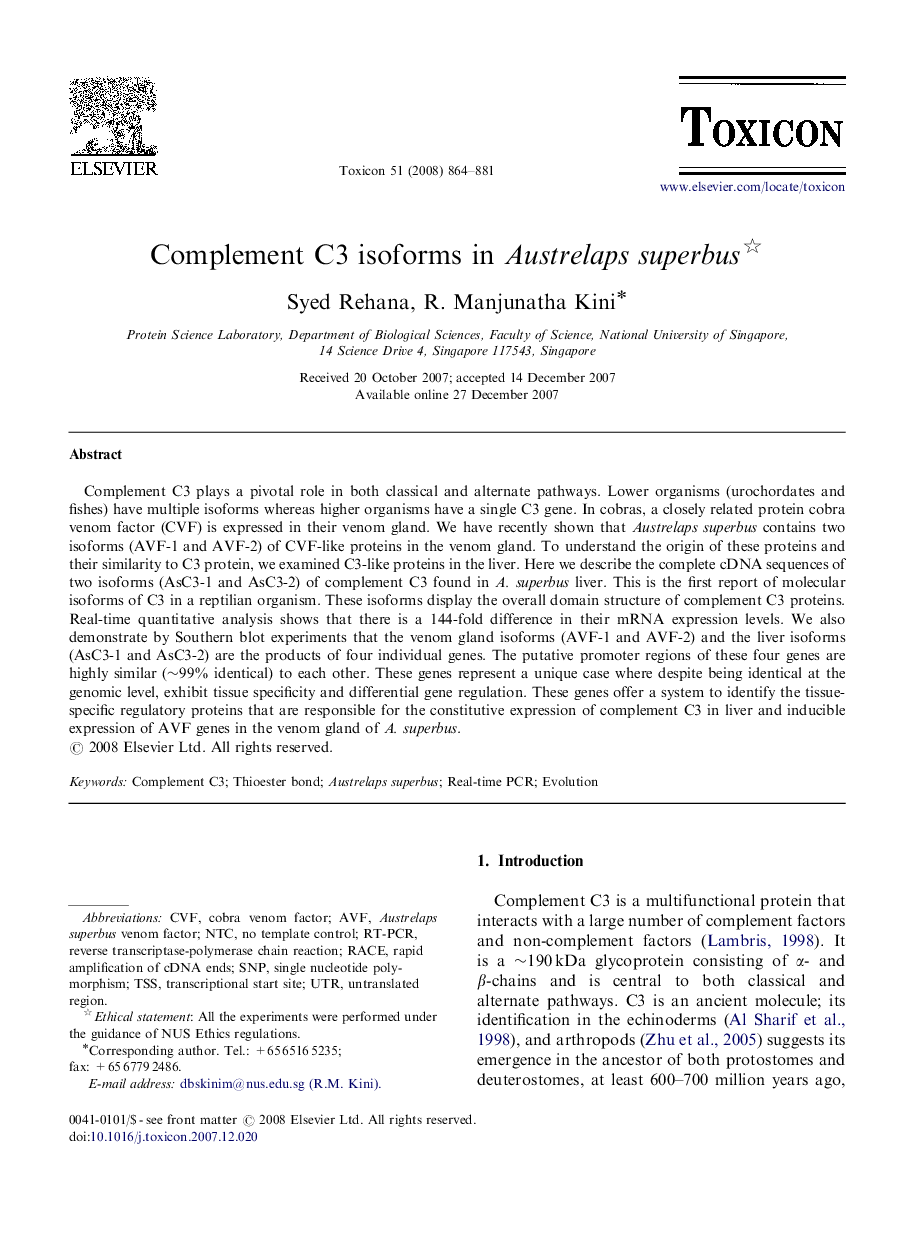| Article ID | Journal | Published Year | Pages | File Type |
|---|---|---|---|---|
| 2065706 | Toxicon | 2008 | 18 Pages |
Complement C3 plays a pivotal role in both classical and alternate pathways. Lower organisms (urochordates and fishes) have multiple isoforms whereas higher organisms have a single C3 gene. In cobras, a closely related protein cobra venom factor (CVF) is expressed in their venom gland. We have recently shown that Austrelaps superbus contains two isoforms (AVF-1 and AVF-2) of CVF-like proteins in the venom gland. To understand the origin of these proteins and their similarity to C3 protein, we examined C3-like proteins in the liver. Here we describe the complete cDNA sequences of two isoforms (AsC3-1 and AsC3-2) of complement C3 found in A. superbus liver. This is the first report of molecular isoforms of C3 in a reptilian organism. These isoforms display the overall domain structure of complement C3 proteins. Real-time quantitative analysis shows that there is a 144-fold difference in their mRNA expression levels. We also demonstrate by Southern blot experiments that the venom gland isoforms (AVF-1 and AVF-2) and the liver isoforms (AsC3-1 and AsC3-2) are the products of four individual genes. The putative promoter regions of these four genes are highly similar (∼99% identical) to each other. These genes represent a unique case where despite being identical at the genomic level, exhibit tissue specificity and differential gene regulation. These genes offer a system to identify the tissue-specific regulatory proteins that are responsible for the constitutive expression of complement C3 in liver and inducible expression of AVF genes in the venom gland of A. superbus.
